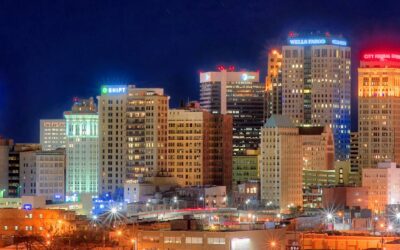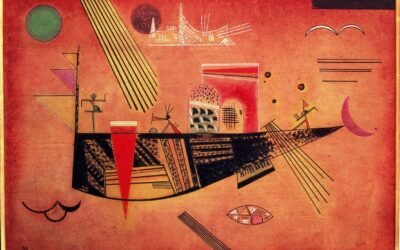Our fight or flight response was a gift that kept us alive while we were living in the wild. When we heard a tiger growl, we either had to fight a tiger or run away from a tiger. The first thing that happens during the fight or flight response is that our mind loses our connection to our body. If you are going to fight a tiger or run 50 miles away from one, you don’t want to feel what is happening to your body.
The fight or flight system is less helpful when it is being activated by fear of social situations or by traumatic memories in our past. When our fight or flight system becomes activated and there is no one to fight and nowhere to run, we can not discharge the enormous amount of emotional energy our brains are carrying. When we become disconnected from our bodies we are not aware of the physiological responses that are accelerating the stress response.
We do not feel our heart rate skyrocketing. We do not feel our bodies warm and start to sweat as blood moves into the small capillaries across the top level of our skin. We do not feel our muscles store tension and lock up. These physical responses, when we are not aware of them, cause us emotional distress. If we do not take steps to interrupt the stress response our minds will continue to obsess and our thoughts to race. This experience of fear, directed at a problem we cannot solve by more thinking, will make us feel powerless, the world feel unsafe, and the future feel hopeless.
When we are experiencing trauma our brain is in such an activated state that it is not able to record memories correctly. Traumatic memories are written into the brain improperly. These memories are experienced somatically and emotionally as if they were currently happening to us every time we recall the memory. Intellectually we may know that these events occurred in the past, but emotionally and physically we experience the sensations of the trauma in the present. Normal healthy memories we can recall as past events that we are able to think about, form new ideas about, and have new perspectives on.
Because the traumatic memory is something that we are forced to relive every time we access it, we are not able to integrate these memories into a larger story and are stuck with the beliefs that we held about ourselves and our surroundings during the trauma. These trauma memories or traumatic fears are “stuck” or “black and white”. We are not able to understand the trauma as an event that is no longer our current reality. The part of our brain that is activated during our fight or flight response is not able to tell time. The stuck memory will activate the amygdala without activating the other parts of the brain we need to think and reason. These stuck memories are the reason that we panic and dissociate. Reliving the emotions and beliefs from a past experience makes us feel powerless, as we attempt to escape from an event that is no longer taking place.
This inability to think about the trauma without experiencing it means that we are trapped within the distressing feelings we had about ourselves during the trauma. This is why we feel powerless, hopeless, responsible, or dirty, even though the incident is no longer taking place. These negative beliefs about the self during the trauma, are often the most lasting and damaging part of the traumatic incident. Recognizing and combating being overwhelmed by the trauma belief is the first step towards pulling yourself away from the incident and back into your current surroundings and current reality. There is no one way to achieve this. However most patients find that to do it successfully requires a combination of awareness of our bodily reactions, changing our thinking, and often reconnecting to a greater transcendent or spiritual reality.
Body

Choose a particular group of muscles and try to maintain awareness of them despite the panic or dissociation. Tense them as tightly as you can and then force them to relax. Stay with the experience of the muscle group trying to relax.
- Choose a food with a strong flavor like mint, chocolate, cheese, or a pickle. Hold the food on your tongue and stay mindfully aware of the sensation of taste. Notice how different parts of your tongue taste different flavors.
- Find something with a strong texture, like a soft blanket or a cool stone. Feel the item and be mindful of the experience. Try and pull yourself back into the world around you through the connection.
- Smell a strongly scented item, like peppermint oil or a scented candle. If possible choose a scent that reminds you of a pleasant place or memory. Try and reconnect with your senses and your environment by experiencing the strong smell. Notice what the smell makes you think about or feel in your body.
- Laying under an “anxiety” blanket or weighted blanket can be a stimulating somatic experience. If you don’t have one, try lying under several heavy blankets to slow your heart rate and calm down.
- Rub a mentholated lotion around the neck and chest when you notice panic starting. There are many brands like Blue Stop ™ that are marketed for arthritis and muscle pain. The cooling sensation can help you reconnect with your body and slow your heart rate.
- Wrap a frozen bag of peas in a towel and put it across your forehead and eyes. This will activate the body’s natural “dive response”. When the head becomes colder than the rest of the body, your body thinks it is diving into deep water and will slow your heart rate and relax muscles to save oxygen.
Mind
- Make a mantra about the fear, negative belief, or trigger for your panic or dissociation. This should be something that reminds you that you are ok and that the belief about the trauma is not true right now. Eg. “I am safe, I am free” or “my past is not my future” or “I am loving, I am loved”. Repeat the mantra to yourself when you notice the distressing belief taking hold.
- Break down what you are currently doing into a series of steps, and repeat back to yourself the steps of what you are doing in a deconstructed way. Remember that you are competent and that these are easy things to do. Eg. “I am turning on my blinker at the intersection” or “I am putting peanut butter on the bread”.
- Go through your phone or a mental calendar of future events and realize that this moment is just one part of the rest of your life. Go through your schedule and realize that right now is just one minute of the next hour of the next day of the next week of the next year. Think about things that you are excited to do in the future. Think of ways you can prepare for them.
- Try and put your finger on the exact emotions that you are feeling. “Overwhelmed” or “freaked out” are not emotions. Try and specifically describe your experience. Ask yourself if your current reality necessitates this experience. Try and discover if you are feeling scared, vulnerable or angry in this moment. If so, try and figure out who or what you are directing these emotions toward.
- The “stuck memory” of the trauma remembers the muscle groups that were tightened during the trauma. It remembers the way that you wanted to move your body’s posture to protect yourself. Most importantly it remembers the way that you felt about yourself during the trauma. you may have wanted to curl up into a ball or stand up and fight. You may have thought that you were dirty, weak, small, or foolish. remind yourself that the traumatic belief you had about yourself during the trauma is not true. Also, try and move your posture into the opposite position the trauma belief makes it want to move into. Relax all muscle groups that want to tighten.
Soul
- Think of an object or a place that you find beautiful. Look up a picture on your phone if you have access to one. Think about what you find beautiful about this object or place. Notice all of the things that you appreciate about the beauty of this place or object. Eg. pictures of the beach or a famous painting or sculpture
- Think about someone you love and feel safe with. Think about what it is that you love about them. Think about this person and try and cultivate compassion for them. Feel yourself move from isolation to connection, and fear to compassion. If a word or phrase jumps out at you that represents this relationship to you, then repeat it to yourself in your head. Eg. Trust, kindness, safety
- Think of your whole life like a giant web. Imagine yourself at the center and the strands of the web as your connections to others. Think of all the people that you love. Imagine where they are right now and when you will see them again. Imagine that the strings of the web run out from you to where your loved ones are in the world.
- Creativity requires us to get outside our own immediate experiences and reconnect with our resilient self. Draw a picture with anything you have, pen and napkin or toe in the dirt. Think about how you want to feel and try and express that feeling however you can. Hum a tune or sing a song if that is more appealing to you. When you feel that you are out of the immediate experience of the panic or dissociation, do a more complex creative activity that you find healing. Bake a cake, paint pictures, write a short poem, or make yourself do a small home improvement project. Reconnecting with our creative image and spatial processing part of the brain allows us to draw new connections and create new learned experience that helps us process trauma.
- Go to a space that you find calming, spiritual, or that feeds you in a personal way. Walk in the woods, sit by a lake, bird watch, attend a religious service, watch a theater piece, or go for a scenic drive. Find a space where you feel like you are calm, safe, and can start to be yourself again.
- Try to find your center or mindful self during the experience of the panic or dissociation. Think about the essence, psyche, or soul of yourself as a person. Feel how this anxiety, panic and dissociative episode is holding you back from being present like you would like to be. Ask yourself, what in me do I need to leave behind so the rest of me can become what I want to be? Ask yourself, what enlarges what I am, and what restricts who I am? Visualize yourself taking off or moving away from the anxiety experience. Realize that it is hurting you and not helping you right now. Try and feel yourself leave some of it behind so your mindful self can become more present.
Bibliography
- Van der Kolk, Bessel A. The Body Keeps the Score: Brain, Mind, and Body in the Healing of Trauma. Penguin Books, 2015.
- This book explores how trauma affects the body and brain, providing insights into somatic experiencing and the integration of traumatic memories.
- Levine, Peter A. In an Unspoken Voice: How the Body Releases Trauma and Restores Goodness. North Atlantic Books, 2010.
- Levine discusses the connection between trauma, the body’s physiological responses, and the potential for healing through body-centered therapies.
Further Reading
- Ogden, Pat, et al. Sensorimotor Psychotherapy: Interventions for Trauma and Attachment. W. W. Norton & Company, 2015.
- This book offers practical techniques for therapists working with trauma survivors, emphasizing the importance of body awareness and somatic interventions.
- Herman, Judith. Trauma and Recovery: The Aftermath of Violence – From Domestic Abuse to Political Terror. Basic Books, 1997.
- Herman explores the psychological effects of trauma and outlines stages of recovery, highlighting the importance of recognizing and healing from traumatic experiences.
- Rothschild, Babette. The Body Remembers: The Psychophysiology of Trauma and Trauma Treatment. W. W. Norton & Company, 2000.
- Rothschild explains how trauma impacts the body and provides strategies for integrating body-based approaches into trauma therapy.
- Siegel, Daniel J. The Developing Mind: How Relationships and the Brain Interact to Shape Who We Are. Guilford Press, 2012.
- Although broader in scope, Siegel’s work explores the neurobiology of relationships and attachment, shedding light on how early experiences impact later emotional regulation and trauma responses.
- Lipton, Bruce H. The Biology of Belief: Unleashing the Power of Consciousness, Matter & Miracles. Hay House, 2005.
- Lipton’s book delves into the intersection of biology, belief systems, and healing, offering perspectives on how our thoughts and perceptions influence our physiological responses.
- Porges, Stephen W. The Polyvagal Theory: Neurophysiological Foundations of Emotions, Attachment, Communication, and Self-regulation. W. W. Norton & Company, 2011.
- Porges’ theory explains the role of the vagus nerve in regulating emotional responses and social engagement, providing insights into trauma responses and therapeutic approaches.
- Kabat-Zinn, Jon. Full Catastrophe Living: Using the Wisdom of Your Body and Mind to Face Stress, Pain, and Illness. Bantam Books, 1990.
- Kabat-Zinn introduces mindfulness-based stress reduction (MBSR) techniques that can be applied to manage stress and cultivate awareness of body sensations.
- Naparstek, Belleruth. Invisible Heroes: Survivors of Trauma and How They Heal. Bantam Books, 2004.
- Naparstek discusses guided imagery and other mind-body techniques used in trauma recovery, highlighting personal stories of healing and resilience.


























0 Comments